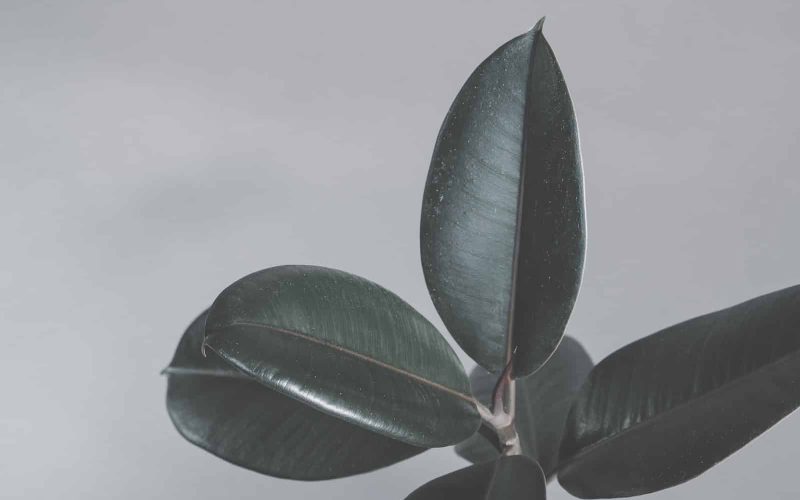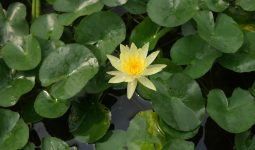The Rubber Tree Household plant, also known as Ficus Elastica, is a comparatively easy plant that likes oblique light. It is for an easy and low-maintenance plant to develop in homes.
The Rubber Tree houseplant is a high-quality tropical plant observed in native South Asia.
However, this plant has been likewise observed for years in Sri Lanka, Hawaii, the West Indies, and Florida.
It is an evergreen tropical plant that greatly desires the household as it can easily tolerate indoor light conditions.
One of the most interesting facts about this beautiful houseplant is that NASA (National Aeronautics and Space Administration) has declared that the Rubber Tree Houseplant has hygienic characteristics.
Rubber Tree Houseplants instantly attract the eye, calm the soul, and bring a peaceful environment to your house!
This plant has a wonderful history. Because of its latex sap properties, it has been used to make rubber.
Because of this characteristic, these plants are also called rubber figs and rubber bushes. Let’s find out more information about these excellent houseplants.
Rubber Tree Houseplant – A Botanical Evaluation:
The Rubber Tree Houseplant family, called Moraceae, consists of shrubs, lianas, and timbers.
It is recognized for the latex sap that comes out when the tree leaves are wounded.
They have huge oval-shaped leaves full of lime tint. These plants can grow fast, up to 100 feet, in normal atmospheric conditions.
Furthermore, if provided with acceptable environmental conditions, they can develop up to 200 feet tall. Regarding the shape of their leaves, they can adjust their shape in different stages of life.
This is an incredibly progressive feature of these plants, and they must maintain their steady shape throughout their lives in Spain.
Different Types of Rubber Tree Houseplants
There is a huge diversity of Ficus Elastica. But before stepping into the types, you should know that the best time to purchase these plants is when they are young.
This is because, in the natural environment, the plant’s trunk can develop up to 6-7 feet.
However, in the indoor surroundings, these plants grow to be medium-sized or small trees as they adjust to the household ecosystem.
That is why it is essential to buy these plants while they are young. They will then adapt to the household environmental conditions and grow nicely.
Let us now discuss the types of Rubber tree houseplants.
1. Robusta
This is a common type of Rubber houseplant with thick, dark, inexperienced leaves.
2. Tricolor
A unique type of rubber houseplant with the same thick and leathery leaves but comes in three shades, i.e., cream, pink, and green.
3. Tineka
Ficus Elastica “Tineka” carries stems and leaves in a pink shade. However, the leaves also give a mixed shade of green and cream color.
4. Decora
This rubber houseplant carries massive glossy leaves that can develop up to 12 inches.
5. Doescher
Contains freckled leaves along with crimson significance underneath.
6. Burgundy
Their leaves are dark maroon shades that give an almost black appearance in light.
How to Develop Rubber Tree Houseplant?
Although a rubber tree is difficult to grow inside, it requires a proper and balanced light, moisture, and humid environment.
They can grow up to 10 feet tall inside the home; on the contrary, they can develop as much as 100 feet tall in the outside atmosphere. That’s a big difference!
Some rubber trees can work well in indoor surroundings, i.e., Tuneka, Burgundy, Ruby, and Robusta.
If these plants are supplied with proper sunlight (not harsh light) and a humid environment, they can grow very well inside your house, making your residence a beautiful place to live.
So, without wasting much time, let us explore the strategies for developing Rubber Tree plants at home.
Choosing the Right Soil for Ficus Elastica
In the beginning, the plant’s leaves have a waxy texture. Subsequently, they turn into a pink tint, and while they are entirely mature, they transform into a dark green leathery texture.
As the rubber plant matures, it falls because of its large and heavy leaves.
To cater to this hassle, you have to place a wooden bamboo alongside the plant so that it can drape on the log to preserve itself.
Rubber houseplants grow well in adequately draining soil. These tropical plants welcome soil that doesn’t dry quickly and has precise water retention characteristics.
One portion of peat, one portion of pine bark, and one portion of sand are required to make suitable soil for growing this houseplant.
The Proper Sunlight
Rubber tree houseplants bloom with the blazing, sneaky sunlight. Like other tropical plants, rubber plants also welcome early morning sunlight but can’t tolerate harsh and shimmering light.
So, you should place your rubber tree in a spot where it doesn’t obtain direct sunlight since the leaves begin to burn if exposed to the solar’s direct heat.
You should place them away from harsh light to protect them from harm.
But if you notice that the leaves are fading, it shows that your plant needs light. That’s how you can manage the light of your rubber tree houseplant.
Proper Watering
The Ficus Elastica houseplant requires watering after short intervals and cannot survive in dry soil.
To maintain the watering of your plant, the best satisfactory manner to signify whether or not your plant calls for water is to check its soil. If the soil is dry, then you should water your plant immediately.
Moisture and Temperature Management
These tropical plants work best when temperatures are between 65 and 85 degrees.
In summer, if you put your plant in the outside environment, it will grow more perfectly.
These rubber tree houseplants are sensitive to cold climatic conditions like tropical plants.
So, when the temperature drops from 65 degrees, you must keep your plant inside your home.
Moreover, these plants grow in humid atmospheric conditions. If your home is dry, you should arrange a humid place for your plant.
Fertilizing Rubber Tree Houseplant
Fertilizing is crucial in making your plant more potent and growing taller. You must fertilize your plant every week with a liquid fertilizer, which works best in the plant’s development.
One aspect must be cited here: indoor plants require minimal fertilization since they grow rapidly. Adequate fertilizers might be dangerous for your plants, making the leaves overstretched and faint.
Care and Maintenance of Rubber Tree Houseplant
To avoid any inconvenience when caring for and maintaining any tropical houseplant, one must follow some key factors and care techniques.
A few simple elements include light, water, propagation, moisture, and warmth.
One could also provide these plants with northern or southern exposure, but keeping these long plants far from windows or air is vital. In this way, you can get a masterpiece for your home.
Conclusion
This is all about the care and upkeep of the rubber tree houseplant. However, you must take a few safety precautions while having these tropical plants in your house.
The white substance in its leaves can irritate your eyes, so wash your hands thoroughly after touching them.
Furthermore, these plants are sensitive to an expansion of pests like aphids, spiders, mites, and thrips. If you see any pests in your plant, use herbal insecticides to eliminate them.
If you have a rubber tree houseplant or plan to buy one, this write-up is for you. Keep reading and sharing this information with your friends and family.








